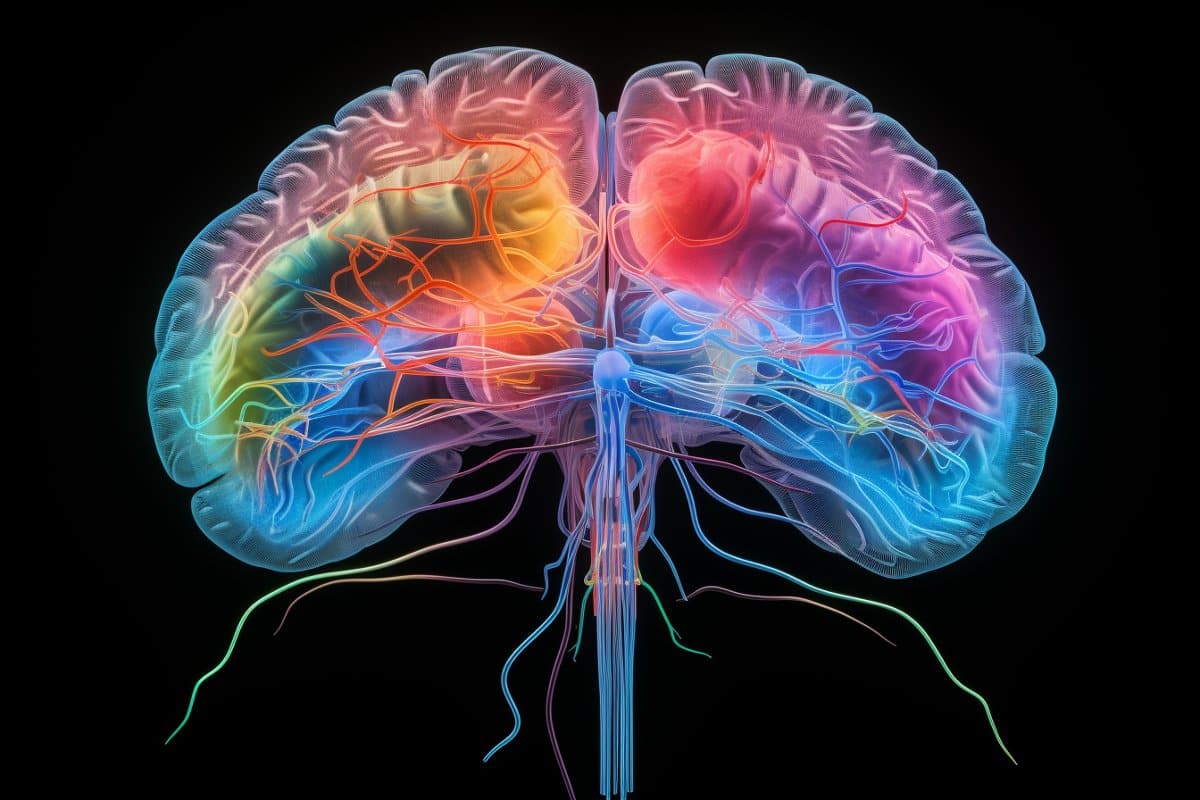Summary: A novel study leverages a vast dataset to uncover brain imaging biomarkers that predict mental illness in adolescents.
Utilizing resting-state functional connectivity analysis, the researchers discovered a brain connectivity pattern that correlates with cognitive function and psychopathological symptoms.
This pattern not only indicated current psychiatric disorders but also predicted the onset and evolution of various mental health issues over two years.
Such biomarkers could revolutionize the diagnosis and treatment of psychiatric conditions, moving towards more objective, brain-based assessments.
Key Facts:
- The study analyzed brain imaging data from nearly 12,000 children, identifying predictive biomarkers for mental illness.
- The identified brain connectivity variate positively correlated with cognitive function and negatively with psychopathology.
- These biomarkers successfully predicted both current and future psychiatric disorders, suggesting a new direction for adolescent mental health diagnosis.
Source: Elsevier
Research and treatment of psychiatric disorders are stymied by a lack of biomarkers – objective biological or physiological markers that can help diagnose, track, predict, and treat diseases.
In a new study, researchers use a very large dataset to identify predictive brain imaging-based biomarkers of mental illness in adolescents.
The work appears in Biological Psychiatry, published by Elsevier.

Traditionally, psychiatric disorders such as depression have been diagnosed based on symptoms according to subjective assessments. The identification of biomarkers to aid in diagnosis and treatment selection would greatly advance treatments.
In the current study, the investigators used brain imaging data from the Adolescent Brain Cognitive Development (ABCD) Study of nearly 12,000 children aged 9 to 10 at the beginning of the study. Modern neuroimaging techniques, including resting-state functional connectivity (rsFC) analysis, allow researchers to investigate the organization of brain circuits through their interaction with one another over time.
Yihong Yang, PhD, senior author of the study, at the Neuroimaging Research Branch, National Institute on Drug Abuse, said, “Using a functional MRI dataset, we identified a brain connectivity variate that is positively correlated with cognitive functions and negatively correlated with psychopathological measures.”
Cognition has long been studied in the context of mental disorders, and recent research has pointed to shared neurobiology between the two, as supported in this new study.
This brain-based variate predicted how many psychiatric disorders were identified in participants at the time of the scan and over the following two years. It also predicted the transition of diagnosis across disorders over the two-year follow-up period.”
Dr. Yang added, “These findings provide evidence for a transdiagnostic brain-based measure that underlies individual differences in developing psychiatric disorders in early adolescence.”
John Krystal, MD, Editor of Biological Psychiatry, said of the work, “Mental illness in adolescence has emerged as a cardinal public health challenge in the post-COVID era. More than ever before, we would benefit from better ways to identify adolescents at risk.
“This study uses data from the landmark ABCD Study to illustrate how neuroimaging data could illuminate risk for mental illness across the spectrum of diagnoses.”
Dr. Yang added, “Finding biomarkers of mental illnesses, rather than relying on symptoms, may provide a more precise means of diagnosis, and thereby aligning psychiatric diagnosis with other medical diagnoses.”
About this neuroimaging and mental health research news
Author: Eileen Leahy
Source: Elsevier
Contact: Eileen Leahy – Elsevier
Image: The image is credited to Neuroscience News
Original Research: Open access.
“Brain Functional Connectome Defines a Transdiagnostic Dimension Shared by Cognitive Function and Psychopathology in Preadolescents” by Yihong Yang et al. Biological Psychiatry
Abstract
Brain Functional Connectome Defines a Transdiagnostic Dimension Shared by Cognitive Function and Psychopathology in Preadolescents
Background
Cognitive function and general psychopathology are two important classes of human behavior dimensions, individually relate to mental disorders across diagnostic categories. However, whether the two transdiagnostic dimensions link to common or distinct brain networks that convey resilience or risk for the development of psychiatric disorders remains unclear.
Method
The current study is a longitudinal investigation with 11,875 youths aged 9- to 10-years-old at study onset, from the Adolescent Brain Cognitive Development study. A machine-learning approach based on canonical correlation analysis was used to identify latent dimensional associations of the resting-state functional connectome with multi-domain behavioral assessments including cognitive functions and psychopathological measures. For the latent rsFC factor showing a robust behavioral association, its ability to predict psychiatric disorders was assessed using two-year follow-up data and its genetic association was evaluated using twin data from the same cohort.
Results
A latent functional connectome pattern was identified that showed a strong and generalizable association with the multi-domain behavioral assessments (5-fold cross validation: ρ = 0.68∼0.73, for the training set (N = 5096); ρ = 0.56 ∼ 0.58, for the test set (N = 1476)). This functional connectome pattern was highly heritable (h2 = 74.42%, 95% CI: 56.76%-85.42%), exhibited a dose-response relationship with cumulative number of psychiatric disorders assessed concurrently and 2-years post-MRI-scan, and predicted the transition of diagnosis across disorders over the 2-year follow-up period.
Conclusion
These findings provide preliminary evidence for a transdiagnostic connectome-based measure that underlies individual differences in developing psychiatric disorders in early adolescence.







